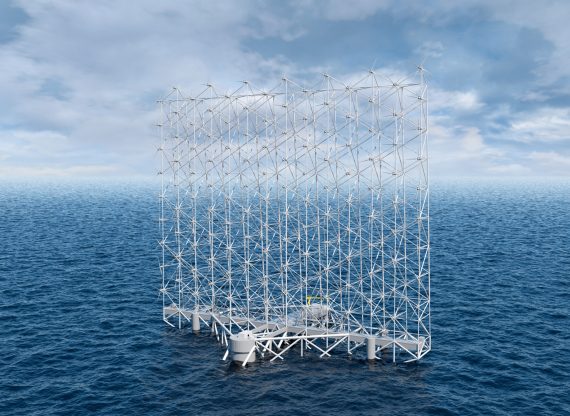Wind Power Meets Entrepreneurship: A Step Toward Carbon Neutrality?

Article 1 of the “Capitalism: Working for the Environment” Series.
According to the Wall Street Journal, the Norwegian company Wind Catching Systems is currently developing an assembly of 126 small wind turbines that form a structure some 300 metres tall. This “wind catcher,” a floating platform anchored to the ocean floor, would be installed 80 km offshore. Wind Catching Systems explains that its platform will be able to pivot 360 degrees to catch the wind, whatever direction it’s blowing from, to produce electricity that will be transported ashore via submarine cables.
Ole Heggheim, CEO and co‑founder of the company, says the unit can produce five times as much energy as conventional offshore wind farms while taking up only one fifth as much space. Construction of the first commercial prototype is set for 2023, in the North Sea, and the company plans to first launch in the UK market.
This original system was made possible by an innovative group of entrepreneurs who took the initiative of looking for ways to improve wind power. As they themselves say, the goal is to build a system competitive enough to operate without subsidies. Therefore, instead of just following a classic approach based on wind farms, they had to innovate.
Will their efforts ultimately be successful? I don’t know. But if they fail, they will pay the price with their own money and that of investors who voluntarily chose to be involved in their project. This is in stark contrast with subsidized projects, in which taxpayers are in a sense forced to invest—not to mention the market distortions and the undue advantages that subsidized businesses enjoy over those that are not subsidized.
An economic system based primarily on competition, risk taking, and respect for property rights encourages such initiatives more than any other. Indeed, in order to stand out from more traditional wind power companies, Wind Catching Systems chose a technology that is substantially different from those that have already been tested and implemented.
The price signals (as carriers of information) and decentralized decision making process inherent to the market economy are the polar opposite of the bureaucratic governmental process which is, by definition, centralized and politicized.
Download the PDF version of this article.
This series shows and explains how economic freedom and the resulting entrepreneurial innovation helps protect the environment.
Michel Kelly-Gagnon is President and CEO of the MEI. The views reflected in this opinion piece are his own.

